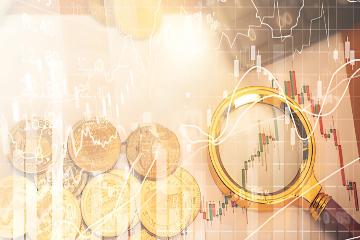Decoding the 1% Risk Rule
Advertisements
In the fast-paced world of trading, risk management stands as a critical pillar that determines the success or failure of tradersAmong the various methodologies developed to maintain this balance, the "1% risk rule" has garnered significant attention, earning its reputation as a cornerstone of effective risk management strategies utilized by countless traders worldwide.
The essence of the 1% risk rule can be succinctly described: it dictates that no single trade should put more than 1% of a trader’s total account balance at riskThis doesn’t mean that only 1% of the total funds are deployed in a trade; rather, it indicates that if a trade results in a loss that accounts for 1% of the total account equity, the trader must close the position to prevent further lossesThis approach allows both day traders and swing traders the flexibility to decide how much capital to commit to a trade, all while ensuring that losses remain well within manageable limits.
A key reason why many traders champion this rule is the multiple advantages it provides, acting as a safety net against uncontrollable losses
Advertisements
In trading, losses are inevitable, and the 1% risk rule functions as a protective umbrella, shielding traders from catastrophic drawdownsWithout such control measures, a single significant loss could potentially obliterate an account, leaving traders without resourcesBy adhering to this discipline, a trader must endure several smaller consecutive losses before facing substantial damage to their account, thereby substantially reducing the likelihood of financial ruin from a single errant trade.
Moreover, there’s a common misconception that strict adherence to this rule may result in missed profit opportunitiesContrary to this belief, a well-structured risk-return strategy can yield consistent profits even while limiting risk to 1% per tradeFor instance, if a trader is willing to risk 1% and their winning trades yield returns of 3%, 5%, or even 10%, the cumulative effect can lead to steady growth in account capital over time
Advertisements
Maintaining a balance where returns on winning trades outweigh those on losing trades is critical, fostering a flourishing trading environment.
The 1% risk rule also serves to simplify trading decisions by providing traders with clear, quantitative standardsA trader can determine how much capital to allocate for each trade based on account size and the pre-established risk thresholdFor example, if a trader has an account balance of $10,560, the 1% risk translates to $105.60. Knowing the entry price and stop-loss price for a stock allows the trader to calculate the optimal number of shares to buy while ensuring that losses remain manageableThis clarity helps traders approach the market with confidence, mitigating the impulse to act hastily or without sufficient analysis.
Real-life applications of the 1% risk rule demonstrate its effectiveness, highlighted by the experience of traders like Donald Darwin
Advertisements
Initially struggling with substantial losses that totaled over $100,000 in just six months, Darwin faced uncertainty about his trading approachHowever, upon a thorough evaluation, he pinpointed risk management as the missing element in his strategyCommitting strictly to the 1% risk guideline transformed his trading journeyBy the age of 26, he found himself on Wall Street, having earned over $2 million in his first three years of trading successHe emphasizes that newcomers adopting this rule can find themselves profitable within a yearFor instance, with an account of $30,000, one could comfortably set a stop-loss threshold at $300, allowing for flexible adjustment of positions based on market conditions, ensuring opportunities for profit regardless of market stability.
As traders grow and evolve, it may be prudent to adjust the parameters of the 1% risk rule to cater to varied trading scenarios
- Calculating the Economics of Urban Renewal
- The Future of Oil Stocks and Currency Markets
- Decoding the 1% Risk Rule
- Urban Planning Adapts to New Economic Drivers
- The Strengthening Trend of the Dollar
For those managing accounts below $100,000, the 1% risk guideline generally remains appropriateHowever, as account balances increase, some traders may choose to extend their risk tolerance to 2%, while others, like Darwin, advocate shrinking it down to 0.5% or even 0.1% to avert disproportionate risks associated with larger positionsThis strategy allows traders to seize profit opportunities early in their journey while effectively mitigating risk as their accounts grow.
Different trading styles also call for distinct risk considerationsFor instance, day traders, who frequently enter and exit positions during market sessions, may find that the higher trading frequency leads to larger exposure than the prescribed 1% risk might permitIt is essential for each trader to evaluate their risk tolerance, trading habits, and the liquidity of their chosen market to determine a comfortable risk percentage, ideally keeping it below 2% to balance potential rewards with the risks taken.
However, it is pivotal to recognize that while the 1% risk rule has undeniably numerous advantages, it is not a one-size-fits-all solution

In markets with lower liquidity, adhering strictly to this rule can pose significant challengesFor example, in the trading of a $10,000 crude oil futures contract, if the underlying asset experiences days without sufficient trading activity, orders that fall below a 10% threshold may go unfilledIn such cases, simply following the 1% risk rule might not suffice.
Ultimately, while the 1% risk rule serves as an admirable guideline and can furnish a protective framework for traders seeking consistent profitability, it is not infallibleTraders must approach it with an understanding of both its strengths and limitations, customizing its application to fit their unique circumstancesBy doing so, the rule can become a powerful ally on the journey to trading success, rather than a constraint that hampers one’s potentialEmbracing this philosophy enables traders to navigate the unpredictable seas of trading with resilience, laying the groundwork for sustained financial growth.
Leave A Comment